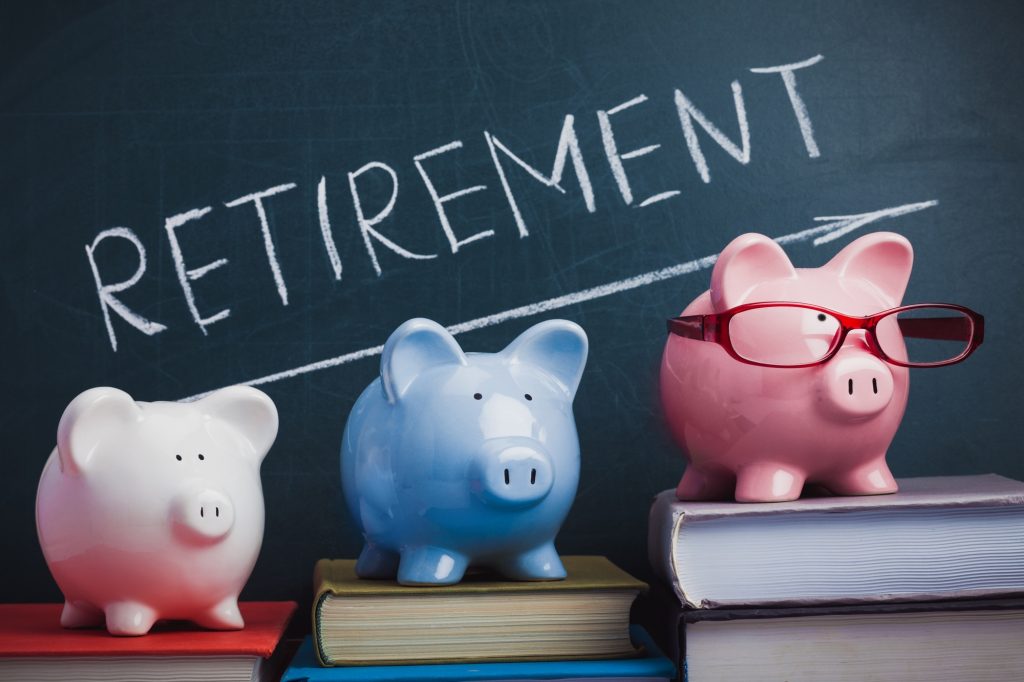The Best Retirement Planning Advice for Business Owners
If you own your own business, you are solely responsible for your retirement planning. Unless your business is a side job only, you don’t have an employer-offered retirement or pension plan.
According to a recent survey of business owners, most business owners between the ages of 45 and 64 are not financially prepared for retirement.
In addition, if you employ staff, you may want to offer them an employee retirement plan as well. This article contains retirement planning advice for the small business owner. But first, here are the reasons why this advice is needed.
Why Small Business Owners Aren’t Saving Enough
Small business owners tend to reinvest their earnings back into the business. Aside from not setting aside enough for retirement, they often refrain from paying themselves as well.
Much of the wealth, then, is rolled into the business. Taking money out of the business for retirement benefits is necessary. But it also takes away some opportunity for the business growth.
Another reason the self-employed don’t save enough for retirement is that many small businesses are modest enterprises. Most business owners value their company at under $500,00. Less than 13% state their business is worth more than $1 million.
The Wrong Contingency Plan
Business owners are known for pouring everything they have into their business, including their savings. This approach is dangerous for many practical reasons.
The principal reason is that if the business fails, the income stops. Worse, whatever wealth the owner has sinks with it.
Part of the retirement plan is to sell their business and add the proceeds to their retirement savings. What if you can’t sell the company at that time? The usual response is that the business owner will have to put off retirement.
That contingency plan works until an accident or health issue emerges. Up to 55% of people who retire earlier than planned had to do so because they developed a disability or health problem.
Retirement Planning Advice for the Small Business Owner
Here are some ways small business owners can secure their savings for retirement.
Do Some Math
Do you know how much money you’ll need to live comfortably in retirement? Perhaps you plan on handing the day-to-day operations down to your children to run. How much will your share of the business payout then?
To do this, you need a sense of what your livings costs will be once you retire. Most of the larger financial services firms like TIAA and Fidelity, have fee retirement worksheets and calculators online to help you determine that.
Based on your results, you can add automatic retirement savings deposits to your current monthly budget. Completing this exercise may be an eye-opener. It may be the motivation you need to get the ball rolling on your retirement plan.
Consult a CFP for Retirement Planning Advice
A financial adviser can offer focus and jumpstart your retirement plan. Many of the best hold the designation of Certified Financial Planner (CFP). You may be able to get a referral from your bank.
A CFP can help you create a long-term plan, which can be hard for business owners who focus on the business rather than themselves. Or you can search through some of the national databases like the National Association of Personal Financial Advisors.
Others include the Financial Planning Association, The Garrett Planning Network, and the Certified Financial Planner Board of Standards.
Begin a Diversified Retirement Plan Today
Retirement plans for LLC owners, small business IRA plans, and small business pension plan are often interchangeable terms. Regardless of whether you own an LLC or are a freelancer, you should have some sort of diversified retirement plan.
You don’t have to invest a significant amount of money into it now, but your budget should include retirement contributions. Consider moderate contributions that will help during tax time.
That includes tax deductions you make to your employees’ retirement savings as well. Remember, also, that your investment will grow tax-deferred for years until you start withdrawing funds upon retirement.
Retirement Plans for Small Business Owners
As a small business owner, your choices for retirement plans are a SEP-IRA, SIMPLE IRA, Solo 401(k), and SIMPLE 401(k). Except for the SEP, your business can be a partnership, sole proprietorship, limited liability company, or corporation.
SEP-IRA
A simplified employee pension (SEP) is a type of individual retirement account (IRA). Small business owners and their employees can contribute to a SEP-IRA. A SEP-IRA is tax-deductible like a traditional IRA, though it’s a better choice for a smaller company.
For 2018 tax returns, you can contribute up to 25% of your compensation or up to $55,000 (whichever amount is less).
Business owners can take advantage of this type of retirement account even if they are the only employee. Note that if a business has more than one employee, you must make this option available to all.
A SEP-IRA plan enables small business owners to make tax-deductible contributions on behalf of eligible employees. Employees don’t pay taxes on employer contributions until they start taking distributions upon retirement.
Each year, you decide how much (or if any) to contribute on your employees’ behalf. You don’t have to contribute if your business suffered losses the previous year.
The SEP plan is a strong option for small businesses because it enables flexibility and larger contributions.
SIMPLE IRA
A savings incentive match plan for employees (SIMPLE) IRA is a retirement plan option if you employ 100 or fewer employees.
Contributions are pre-tax and come out of your employees’ paychecks. Contributions can’t exceed $12,500 in 2018. Employees over 50 years old can contribute up to $15,500.
As the employer, you must match your employees’ contributions. You can contribute 2% of the employee’s compensation. Or you can match a dollar-for-dollar amount that doesn’t exceed 3% of their pay.
You must contribute to the SIMPLE IRA even if your employee chooses not to. And, the same type of contribution applies to all employees.
You can lower your employer contribution to 1% or 2% of the employee’s total compensation. You can do so in any two out of five years that the plan remains in effect. For the other three years, you must make either a 2% flat contribution or a 3%.
Remember, you are also an employee. The contributions you make, both as an employer and employee, are tax-deductible.
Solo 401(k) and SIMPLE 401(k)
If you are self-employed with no employees (except your spouse), you can add a Solo 401(k) to your list of options. You can contribute up to 25% of your compensation pre-tax.
You can also have an employee’s contribution up to $18,500 for 2018. This extends to $24,500 if you are 50 or older.
Note that your total 2018 contribution cannot be over $55,000 unless you are taking advantage of catch-up contributions. If you work together with your spouse, he or she can contribute the same amounts.
A SIMPLE 401(k) applies if your business has 100 employees or less. You and your employees can contribute up to $12,500. People who are age 50 and older can contribute up to $15,500.
Employees can borrow against their 401(k) account. They can also make penalty-free withdrawals if they incur a financial hardship. View here for more information about 401(k)s.
Have an Exit Strategy
If all goes to plan, the business you have poured your heart and soul into will become one of your most substantial assets. Part of your retirement plans should include liquidating your investment to fund your retirement.
Build the Foundation for Selling
So even while you are building your business, you should also lay the foundation for selling it. If you plan on selling your business when you retire, then it needs to be able to continue without you at the helm.
Here are some questions to ask yourself. Who else could run your business? Do you know anyone who may want to own it? Even more importantly, who will pay you what it’s worth?
Do you have a partner, relative, employee, or even a competitor who would be interested? When you do sell, do you want to keep a partial stake in the business? Or do you want to walk away from it and enjoy full retirement?
Account for Market Fluctuations
Market conditions fluctuate constantly. You should factor that in as an unknown that will affect your future sale price.
Add some flexibility to your retirement timeline so that you can wait to sell (or sell sooner) when there is a strong market.
If you put off retiring for too long, you will create distress sale conditions. You won’t be able to get the premium price you want for your business.
Don’t Put It Off Until Tomorrow
Even if you can’t image retiring, it’s a smart idea to create a retirement plan. If nothing else, you’ll have options in the event life throws you a roadblock.
Who knows? You just may change your mind and want to follow a different path a few years from now.
It comes down to ensuring that you can choose your way. After all, you work for yourself partly for that freedom of choice. If keep working your whole life, then you should do it because you want to, not because you have to.
Hopefully, you found this retirement planning advice helpful. Remember to seek out professional advice if needed to get your plan in motion.
For additional questions or suggestions, please contact us.




